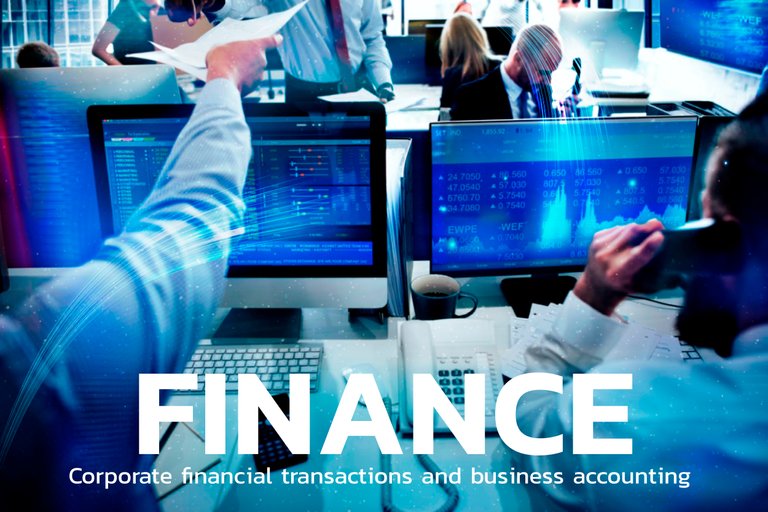Traditional Banking vs. Decentralized Finance: Future of Finance
Greetings guys!!!, Happy new week! You will agree with me that the rise of blockchain technology and cryptocurrencies has brought about a revolutionary financial ecosystem known as Decentralized Finance (DeFi). This emerging sector challenges the dominance of traditional banking systems by providing a decentralized, transparent, and more inclusive alternative.

Source
As the battle between traditional banking and DeFi intensifies, it is essential to explore the key differences, advantages, and potential challenges of both models to determine which path the future of finance may take.
Traditional Banking:
Traditional banking has been the backbone of the financial system for centuries. It is characterized by a centralized structure, where financial institutions act as intermediaries between savers and borrowers. Banks offer various services, including savings accounts, loans, investments, and payment processing, while maintaining regulatory compliance under government authorities.
Advantages of Traditional Banking:
- Stability and Trust: Banks are well-established and regulated, instilling confidence among customers due to their long-standing reputation and reliability.
- Customer Support: Banks typically offer personalized customer service and assistance, providing a human touch to financial transactions.
- Security: Traditional banking systems are equipped with robust security measures to protect customer assets and personal information.
- Physical Presence: Brick-and-mortar branches provide easy accessibility to customers who prefer in-person interactions.
Challenges of Traditional Banking:
- Centralization: The centralized nature of traditional banks can lead to single points of failure and susceptibility to system-wide disruptions.
- Lengthy Processes: Traditional banking processes can be time-consuming due to bureaucracy and paperwork, causing delays in transactions.
- Limited Accessibility: Some regions may lack proper banking infrastructure, leaving a significant portion of the population unbanked or underbanked.
- High Fees: Traditional banking services often come with higher fees and hidden charges, reducing the overall returns for customers.
Decentralized Finance (DeFi):
DeFi represents a paradigm shift in the financial landscape, leveraging blockchain technology to create a decentralized and open ecosystem. It eliminates intermediaries, allowing individuals to transact directly with each other, using smart contracts to execute transactions without the need for a trusted third party. Key elements of DeFi include decentralized exchanges (DEXs), lending and borrowing platforms, liquidity pools, and yield farming protocols.
Advantages of Decentralized Finance:
- Financial Inclusion: DeFi opens up financial services to a global audience, including the unbanked and underbanked, providing equal opportunities for all.
- Transparency: All transactions on DeFi platforms are recorded on the blockchain, offering unparalleled transparency and traceability.
- Accessibility: Anyone with an internet connection can participate in DeFi, removing geographical barriers.
- Low Barriers to Entry: DeFi platforms often require minimal documentation, allowing users to access services quickly.
Challenges of Decentralized Finance:
- Security Concerns: Despite the blockchain's security, DeFi is not immune to vulnerabilities and smart contract exploits.
- Regulatory Uncertainty: DeFi's decentralized nature poses challenges for regulators, leading to potential regulatory scrutiny in the future.
- User Responsibility: DeFi puts the onus on users to safeguard their private keys and assets, leaving room for human errors and risks.
- Scalability: The current state of some blockchain networks may limit DeFi's scalability, leading to slower and more expensive transactions during periods of high demand.
The Future of Finance:
Determining the future of finance lies in recognizing the complementary nature of traditional banking and DeFi. While traditional banking is likely to continue serving as a foundation for financial services, DeFi has the potential to reshape the industry by offering innovative solutions, financial inclusivity, and increased transparency.
Collaboration between traditional banks and DeFi platforms could bridge the gap between the two systems, providing users with the best of both worlds - the stability and regulatory framework of traditional banking combined with the efficiency and inclusivity of DeFi. This hybrid model could create a more robust and resilient financial ecosystem, empowering individuals and businesses to take control of their finances.
Conclusion:
The battle between traditional banking and Decentralized Finance is an ongoing narrative in the evolution of the financial industry. Traditional banking's legacy and stability are unmatched, but DeFi's disruptive potential and inclusivity have captured the attention of a rapidly growing user base.
The future of finance is likely to be a fusion of these two paradigms, with collaboration and innovation paving the way for a more inclusive, transparent, and efficient global financial ecosystem. As the world embraces the digital revolution, a balanced integration of traditional banking and DeFi is key to shaping the financial landscape of tomorrow.


Congratulations @niyi-adunola! You have completed the following achievement on the Hive blockchain And have been rewarded with New badge(s)
Your next target is to reach 300 upvotes.
You can view your badges on your board and compare yourself to others in the Ranking
If you no longer want to receive notifications, reply to this comment with the word
STOPCheck out our last posts: